Long Road to Recovery: Supply Chain Troubles Impact Industry Relaunch

As predicted, supply issues are hampering the automotive industry’s relaunch. The good news is that practically everyone on the planet understood this would be a problem, but it’s undercut by the preliminary damage created by coronavirus lockdowns.
While automakers had sizable cash reserves with which to endure an economic shutdown, many suppliers did not. Small part suppliers have struggled with liquidity as larger equipment manufacturers try to figure out how to ramp up production and address their own supply headaches. As it turns out, shutting down an entire economic sector is a lot easier than restarting one after it’s been kneecapped.
Despite Michigan factories being greenlit to reopen Monday, plenty of hurdles remain. Facilities won’t be running anywhere near capacity for a while (something we saw with China’s industrial reopening), and have enacted new safety measures that could further impact production. Meanwhile, Elon Musk literally had to defy a county order to get Tesla’s Fremont Assembly running in California. Parts supply is another stumbling block, with many equipment manufacturers unable to relaunch because they’ve simply run out of money.
“The financial liquidity of the industry is severely hampered right now,” Julie Fream, CEO of the Original Equipment Suppliers Association trade group, explained to Automotive News in a recent interview. “Some suppliers, particularly the Tier 2s and Tier 3s we’re hearing from, are really starting to have some difficulty.”
With smaller cash reserves than automakers, modestly sized suppliers have been begging for federal aid to keep them afloat. One lesson we’ve learned from the pandemic is that smaller businesses tend to be more impacted by government lockdowns. With smaller cash piles and banks less inclined to help them, many are starting to look beleaguered, to the point of breaking. Larger outfits have fared better, though few are in what could be considered a desirable position.
“We see just over 20 percent [of suppliers] having less than eight weeks of liquidity — meaning if the industry were not to run at all for eight weeks, they would be in dire straits,” Fream said. “It is a difficult time, and it’s all the more reason why we as an industry have to get started again.”
Fortunately, the notion of starting things back up seems to be getting increasingly popular. Still, it’ll be a while before we can expect to see things humming along like they were before. While American automakers were given the okay to start building cars on May 18th, some Canadian facilities may actually not reopen for another week or two. Fiat Chrysler also has to wait until the start of June to open Belvidere Assembly in Illinois. However, most facilities are expected to run only a single shift (maybe two if the plant churns out high-volume models) until supply chain issues are dealt with and demand stabilizes.
This forces suppliers to similarly tamp down expectations. In addition to effectively guessing how many of their doodads will be required by car manufactures, they’ll also have to throttle production to better serve the industry. It’s probably better than trying to take a whack at full capacity, according to the U.S. automotive advisory leader at PwC Dietmar Ostermann.
“We are trying to start up 200 vehicle programs in a matter of days or weeks,” he told Automotive News last week. “The likelihood that there are some hiccups with some Tier 1 suppliers or some Tier 2 suppliers is just very, very high.”
Ostermann’s optimism is adorable, but we don’t think there’s any possibility of this restart going off without a hitch. There’s simply too many moving parts, including an entire country that basically needs to agree to help the United States get this show back on the road:
Mexico’s supply base presents another threat to North American factories, with mixed signals coming from government officials there. Mexico is a large source of components and materials for U.S. vehicle assembly.
On Wednesday, May 13, Mexico’s federal government indicated the auto sector would reopen on Monday, May 18, and published guidance on how to proceed. But on Thursday, May 14, it published new instructions indicating the industry could not reopen until June 1.
On Friday, May 15, the government said Mexico’s industry can begin operating before June 1, provided companies have completed the process of establishing safety protocols.
Indeed, last week, Bloomberg reported that Daimler has been forced to stop vehicle production at its U.S. plant in Vance, Ala., because it cannot get adequate parts from Mexico. The Alabama plant was the first U.S. production line to resume operations during the pandemic.
“I know that, certainly, the larger Mexican suppliers and the facilities of larger U.S. and European and Japanese suppliers in Mexico will implement the same safety standards,” Ostermann mused. “But I am very doubtful that smaller Mexican supply plants and Tier 2 supply plants will have the safety processes … and testing capabilities in place.”
Nobody knows how these safety protocols, which are pretty much universal across the industry, will impact productivity. Spacing people six feet apart may aid in curtailing the spread of the coronavirus, but it may also limit workplace synergy. At the very least, factories will be briefly handicapped by the time taken to train employees to adhere to the new rules (and adjust to them). Sadly, we won’t have much data on the matter until plants are back to full capacity — a matter which could take months.
At the moment, suppliers are running at whatever level they can get away with. Factories operating in places where government orders allowed them to remain open have largely done just that. Still, no one is cranking out parts like they used to. In addition to having supply issues of their own, there’s not much call for their wares when no one’s building cars. A spokesman for ZF North America Inc. said only about half of its U.S. facilities were running at the end of last week. The company recently claimed these sites may remain idle until the start of June. Few suppliers we’re aware of are running anywhere near 100 percent, and likely won’t be until the overall situation improves.
[Image: FCA]

A staunch consumer advocate tracking industry trends and regulation. Before joining TTAC, Matt spent a decade working for marketing and research firms based in NYC. Clients included several of the world’s largest automakers, global tire brands, and aftermarket part suppliers. Dissatisfied with the corporate world and resentful of having to wear suits everyday, he pivoted to writing about cars. Since then, that man has become an ardent supporter of the right-to-repair movement, been interviewed on the auto industry by national radio broadcasts, driven more rental cars than anyone ever should, participated in amateur rallying events, and received the requisite minimum training as sanctioned by the SCCA. Handy with a wrench, Matt grew up surrounded by Detroit auto workers and managed to get a pizza delivery job before he was legally eligible. He later found himself driving box trucks through Manhattan, guaranteeing future sympathy for actual truckers. He continues to conduct research pertaining to the automotive sector as an independent contractor and has since moved back to his native Michigan, closer to where the cars are born. A contrarian, Matt claims to prefer understeer — stating that front and all-wheel drive vehicles cater best to his driving style.
More by Matt Posky
Latest Car Reviews
Read moreLatest Product Reviews
Read moreRecent Comments
- Lorenzo People don't want EVs, they want inexpensive vehicles. EVs are not that. To paraphrase the philosopher Yogi Berra: If people don't wanna buy 'em, how you gonna stop 'em?
- Ras815 Ok, you weren't kidding. That rear pillar window trick is freakin' awesome. Even in 2024.
- Probert Captions, pleeeeeeze.
- ToolGuy Companies that don't have plans in place for significant EV capacity by this timeframe (2028) are going to be left behind.
- Tassos Isn't this just a Golf Wagon with better styling and interior?I still cannot get used to the fact how worthless the $ has become compared to even 8 years ago, when I was able to buy far superior and more powerful cars than this little POS for.... 1/3rd less, both from a dealer, as good as new, and with free warranties. Oh, and they were not 15 year olds like this geezer, but 8 and 9 year olds instead.
















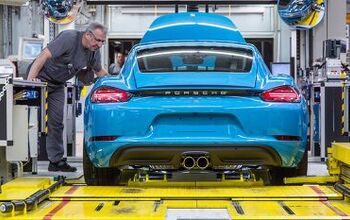



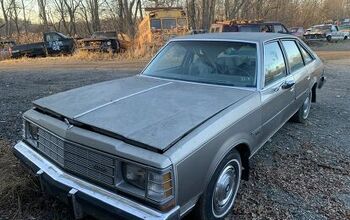
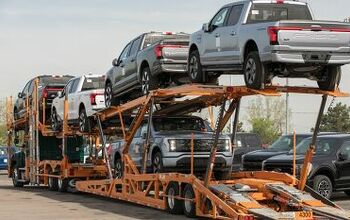
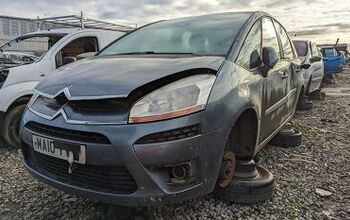



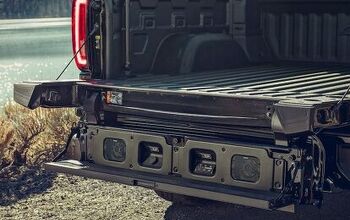





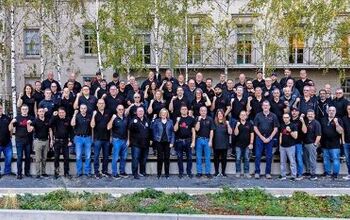

Comments
Join the conversation